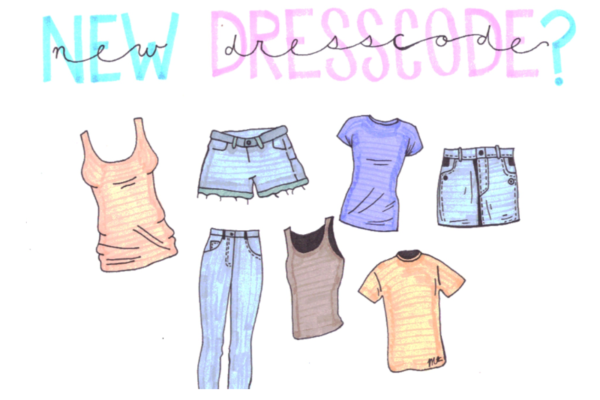Vaping in school: a rising threat on student health
“You hear 50% to 75% of kids may be vaping; there’s a very large population, and a growing population across our country, of students that are using it. And we need to address it and we need to educate our families and our kids about why this is dangerous and why we shouldn’t be doing it.” Lebanon high school’s principal Kevin O’Rourke stated.
In recent years, vaping has become an extremely prevalent issue in schools across America. These small and discreet “vapes” were originally intended to be used as a substitute for smoking, but the market has exploded and now vapes are fueling teenage nicotine addictions all over the country. Students are getting caught every day in bathrooms and even in classrooms with a vape in their hand and a cloud of fruit-flavored vapor around them. Many teens are addicted to vaping, but why are so many now bringing their addictions to school?
The National Education Association has reported that at least 3 million students have been caught vaping in schools. The number of students vaping has also been growing significantly over the past couple of years, indicating that this problem hasn’t even reached its peak yet.
When students are addicted to a substance like nicotine, it is difficult to go long periods of time without it or else they will experience withdrawal symptoms. These symptoms include loss of focus, mood changes, anxiety, and crippling urges that distract from everyday life. Knowing this, it makes sense why students are risking punishment to soothe their symptoms.
Vapes are marketed toward the younger crowd as a new and modern way of smoking with multitudes of fun flavors and colorful packaging. Products such as Vuses and Elfbars are more colorful and softer in shape than previous vape products such as Juuls and their USB drive-like appearance. By making the packaging lighter and more attractive to the teenage eye, companies can deceive teenagers into thinking their products are safe. Almost no one is going to think something that is birthday cake flavored and pastel pink is dangerous.
Many vapes can also be charged with the same chargers used for charging school-issued laptops such as Chromebooks making them more practical to use. All of these factors and the fact that teenagers are notoriously rebellious and haven’t controlled their impulses yet can be attributed to the growing nicotine addictions among students.
However, not much is known about vaping and its effects yet as it is a relatively new invention. According to Brittanica, the first vape was created in 2003 by a Chinese pharmacist named Hon Lik who wanted to invent an alternative to conventional smoking. E-cigarettes hit the US markets in 2007 but didn’t take off until 2014. Ever since then, vaping has become the most used tobacco product among youth as stated by the Centers for Disease Control and Prevention (CDC).
Even though the long-term effects of vaping are still a mystery, the things scientists have learned are quite alarming. The CDC has publicly declared E-cigarettes and vapes “unsafe for kids, teens, and young adults” for many reasons. Vapes contain the dangerously addictive substance nicotine which can harm brain development in younger people. Nicotine specifically harms the part of the brain that controls mood, attention, and impulse control. Even more worrying for students, nicotine changes the way brains form connections, or synapses, which can make learning extremely difficult.
Vaping also famously affects the lungs. Many teens don’t know what they are inhaling through these typically illegally acquired vapes and are therefore blind to the dangerous chemicals and even metal particles that are found in vapes. These dangerous chemicals can lead to a condition called bronchiolitis obliterans, or as it’s more commonly known, Popcorn Lung. Cancer Research UK defines Popcorn Lung as an uncommon disease characterized by a build-up of scar tissue in the lungs that block the airflow. This disease is caused by breathing in an excessive amount of any dangerous chemical, so it’s no surprise vaping has led to a rising number of cases in recent years. Popcorn Lung progresses quickly and can be developed in under a year, and if left untreated can be fatal.
Still, many teenagers are addicted to the point where they bring their vapes to school with them and risk extensive punishment to feed their addictions. Schools have gone to great lengths to curb their students’ vape use with threats of suspension and even expulsion after repeated infractions. Some schools have increased security in places such as bathrooms where vaping is most prevalent. “Vape detectors,” have also been installed to analyze the air quality and report if there is any vapor in the air. Countless assemblies have been held to warn about the dangers of vaping as well.
Despite the nationwide effort to eliminate vape usage, this problem only seems to be growing, and more and more teenagers are falling victim to these harmful products.





